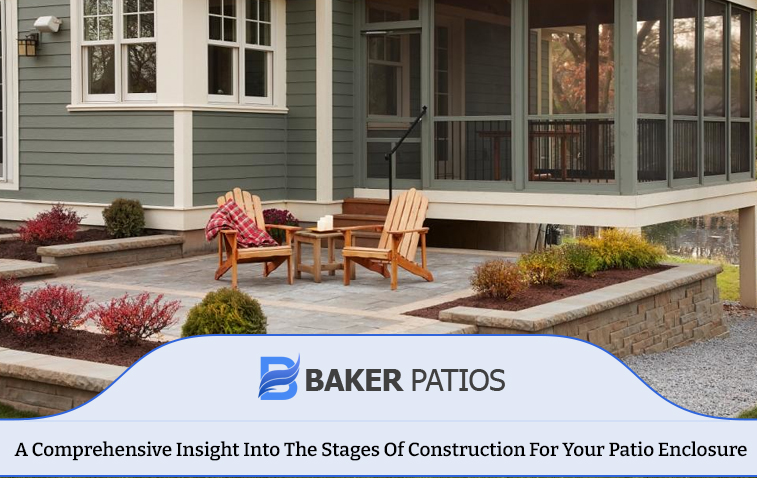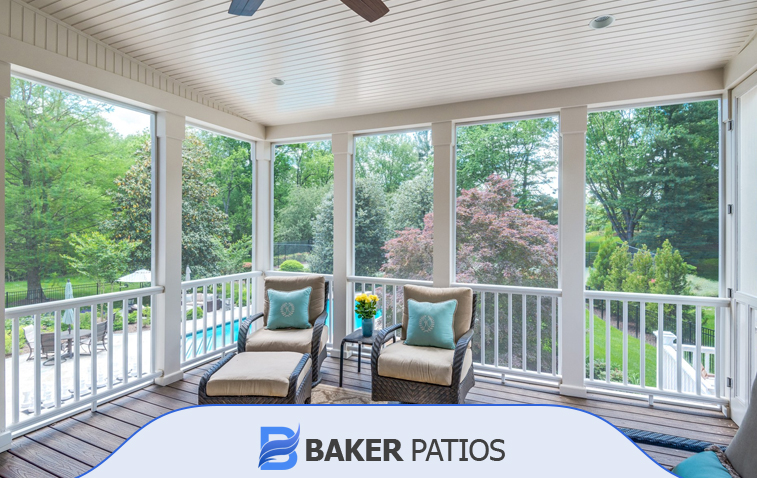A Comprehensive Insight Into The Stages Of Construction For Your Patio Enclosure
Building a patio enclosure is a valuable addition to your home, providing both a functional outdoor space and enhancing the overall value of your property. Whether for relaxation, entertainment, or outdoor cooking, a well-designed patio enclosure offers numerous benefits. If you’re considering adding one, understanding the process can help ensure a smooth and successful project.

More Reasons To Build Your Patio
While boosting home value is one great reason to invest in a patio enclosure, there are plenty of other practical benefits:
|
A relaxation spot |
This can be a relaxing spot for your family on fine weather days. You can be close to nature without having to step out of your property. |
|
Partying spot |
This is the place, from where you can host parties for friends and relatives on fine weather days. |
|
Cook on fine weather days |
You can also set up a temporary kitchen on the patio and use it on fine weather days. The cook may need a bit of fresh air and the patio being transformed into a kitchen would be ideal. |
The Patio Enclosure Construction Process
The process of patio enclosure construction involves several important steps, each contributing to the durability, functionality, and aesthetic appeal of the final product. Here’s a look at how the construction process typically unfolds:
Understanding Your Needs
The first step in any patio enclosure project is determining your specific requirements. This is where you’ll discuss your vision, preferences, and design goals. Consider the following:
- What size and shape do you want your patio enclosure to be?
- Are there any specific materials or landscaping themes you prefer?
- Do you want to include a patio cover for shade or rain protection?
Obtaining The Permits
Any type of construction work on the landscape will require permits from the local City Council and it should be no different here. Before even digging the ground a bit, you will need approvals from the City Inspector. At this stage, the plans will be prepared and submitted to the inspector for approval. Work can only commence after the inspector has given the nod.
Executing the Project
Once the permits are in place, the construction process begins. Here’s what happens during this phase:
- Site Preparation: Clearing the area and preparing the ground for construction.
- Excavation: If necessary, excavation will be done to ensure a stable foundation.
- Foundation Installation: A solid foundation is laid to support the structure.
- Building the Framework: The framework for your patio enclosure is built according to the design plan.
- Installing Pavers: Pavers or other flooring materials are installed to create a durable surface.
- Adding Amenities: Any requested features such as seating areas, lighting, or heating systems are added at this stage.
Final Inspection
Once construction is complete, a final inspection is conducted to ensure that the work meets all safety and quality standards. After approval, the patio enclosure is ready for use, providing a beautiful and functional addition to your home.
Constructing Your Patio Professionally
Building a patio enclosure is an excellent way to expand your outdoor living space and increase your home’s overall appeal. By following the right steps, from planning and design to construction and final inspection, you can ensure a smooth process and a high-quality result that perfectly suits your lifestyle.
For more information or to start planning your patio enclosure design, feel free to call us at (323) 910-0760.
FAQ
What is the time duration of a patio construction project?
It will depend on the area and the material you use. As experienced contractors, we can execute 150 square patio construction work in two to three working days.
Why should I execute the patio construction work during winter?
-
Less damage to turf & plants
-
Quicker permits and approvals
-
A scope to hold the Easter party on your new patio.
Do I need to be at home during project execution?
If you can give the team access to the backyard and power supply, then you need not be at home.
What are the permits necessary for the project?
-
Building license
-
Planning application
-
Water corporation agreement
